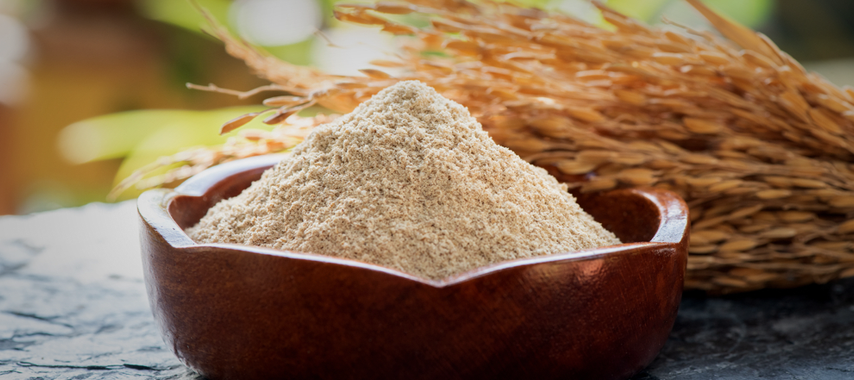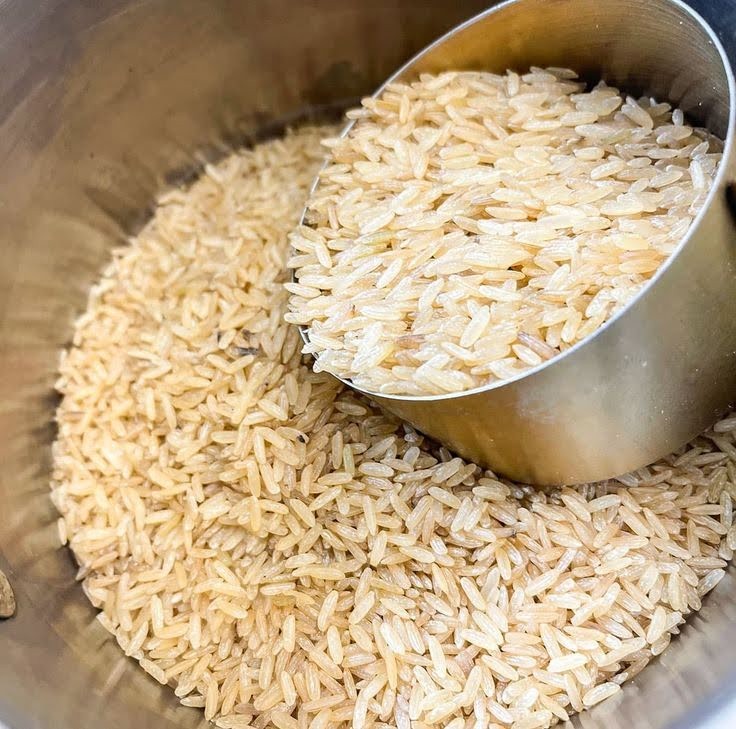

Published on Jan 20th, 2024

In recent times, the gluten-free sector has experienced a significant transformation as customers demand alternatives due to rising health and dietary consciousness. A clear example of this paradigm shift in eating habits is the rise in demand for gluten-free choices, where brown rice flour has taken center stage.
This blog delves into the intricate factors underlying the historically elevated demand for brown rice flour, highlighting its unique qualities that entice health-conscious individuals and those who have overcome gluten sensitivity. As we delve into this investigation, our goals are to reveal the intricate factors that have contributed to brown rice flour's popularity and show how its versatility not only meets the dietary needs of a particular population but also has the power to change the gluten-free food industry completely.
Let's first understand what gluten is.
A combination of gluten proteins can be found in wheat and similar cereals like barley, rye, and oats. It gives dough flexibility, which aids in its rising and shape-holding throughout baking. When mixed with water, the two proteins known as gliadin and glutenin form a sticky network that gives baked items like bread its structure and feel. This network is what gluten is made of.
Gluten is the secret ingredient in different dishes, right? Here's where the story takes a diversion: gluten can cause problems for certain people, particularly those who have celiac disease, where the small intestine gets all screwed up by gluten. It seems like the gluten is igniting a small-scale uprising inside.

The type of flour produced by finely powdering whole brown rice kernels is brown rice flour. It is a substitute for regular wheat flour. Brown rice flour is a whole grain flour because it contains the bran and germ layers of the rice, unlike white rice flour, which is formed from polished white rice grains.
Source of Brown Rice: Exploring brown rice flour's gluten-free qualities reveals a culinary treasure for anyone looking for wheat-free items. This gluten-free journey starts with brown rice, which is the fundamental ingredient.
A careful manufacturing technique preserves brown rice's integrity as a gluten-free grain. Grind to a fine powder without adding wheat or other gluten-containing grains. By ensuring that the flour maintains the original brown rice's gluten-free qualities, this crucial step provides a healthy and secure substitute for people who are sensitive to gluten.
Processing: After being ground to a fine powder, the brown rice retains all of the properties of its original grain, which is a whole grain free of the troublesome gluten protein. This dedication to preserving gluten-free quality ensures that anyone looking for a gluten-free substitute can safely and confidently use brown rice flour as a nutritious, safe, and adaptable complement to their cooking skills.
The following are some of the main dietary advantages of brown rice flour:
Rich in Whole Grains: The fact that brown rice flour is made from whole grains of brown rice accounts for its high nutritious content. In contrast to the refined and processed flours typically found in supermarkets, brown rice flour contains whole grains, including the bran and germ layers. This conscious decision to preserve the bran and germ enhances the flour's nutritional profile rather than being a mere consequence of the milling process.
Gut Health Booster: Brown rice flour has such a high dietary fiber level that it is a powerful tool for improving gut health. This essential nutrient is crucial for maintaining regular and healthy bowel motions and supporting digestive well-being. In addition, consuming enough fiber has been associated with a decreased risk of many chronic illnesses, making brown rice flour a healthy option that benefits the entire digestive tract and is a gastronomic joy.

Cell Guardians: Brown rice flour is an excellent source of antioxidants since it contains a range of phytonutrients and essential minerals like selenium. Antioxidants function as our cells' superheroes, always guarding against oxidative stress. Antioxidants found in brown rice flour have the intriguing potential to reduce inflammation in our bodies. Reducing inflammation means feeling better all around and maintaining a positive health attitude. Hence, brown rice flour contributes to delicious recipes and makes a powerful wellness statement by working with antioxidants to maintain equilibrium.
Plant-Powered Protein Boost: While brown rice flour might not provide as much protein as some other flour, it does offer a valuable and moderate amount of plant-based protein to meals. Critical biological processes, including muscle regeneration, immune system support, and preserving our cells' general health and vibrancy, depend on this protein supply. Using brown rice flour stops being only a gluten-free option; it also becomes a conscious decision to get vital proteins from plants into our regular cooking.
Blood Sugar Regulation: Brown rice flour's high fiber content lowers blood sugar levels by delaying glucose absorption. For those who have diabetes or want to keep their energy levels consistent all day, this may be helpful.
Nutrient-Dense: Brown rice flour is a nutrient powerhouse, which means that, relative to its calorie level, it packs an incredible nutritional punch. As a result, it is a wise and beneficial supplement to any diet that emphasizes moderation and maintaining a healthy lifestyle.
The gluten-free sector is changing significantly; brown rice flour leads the way in this revolution and become popular among food ingredients manufacturers. For those adopting a gluten-free living, its nutritional advantages, adaptability in baking, favorable effect on gut health, and environmental sustainability make it a popular option. With the growing desire for more inclusive and healthful food options, brown rice flour is expected to change gluten-free culinary recipes significantly.
BackBe the first to know about new products, events and offers.